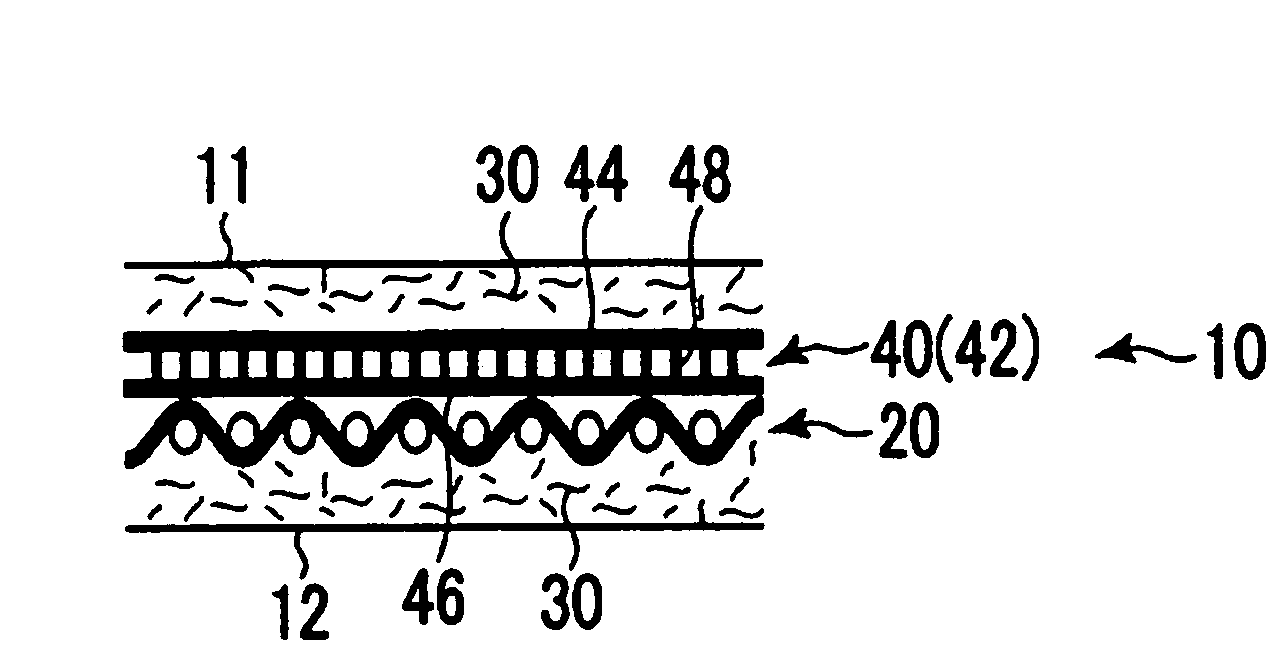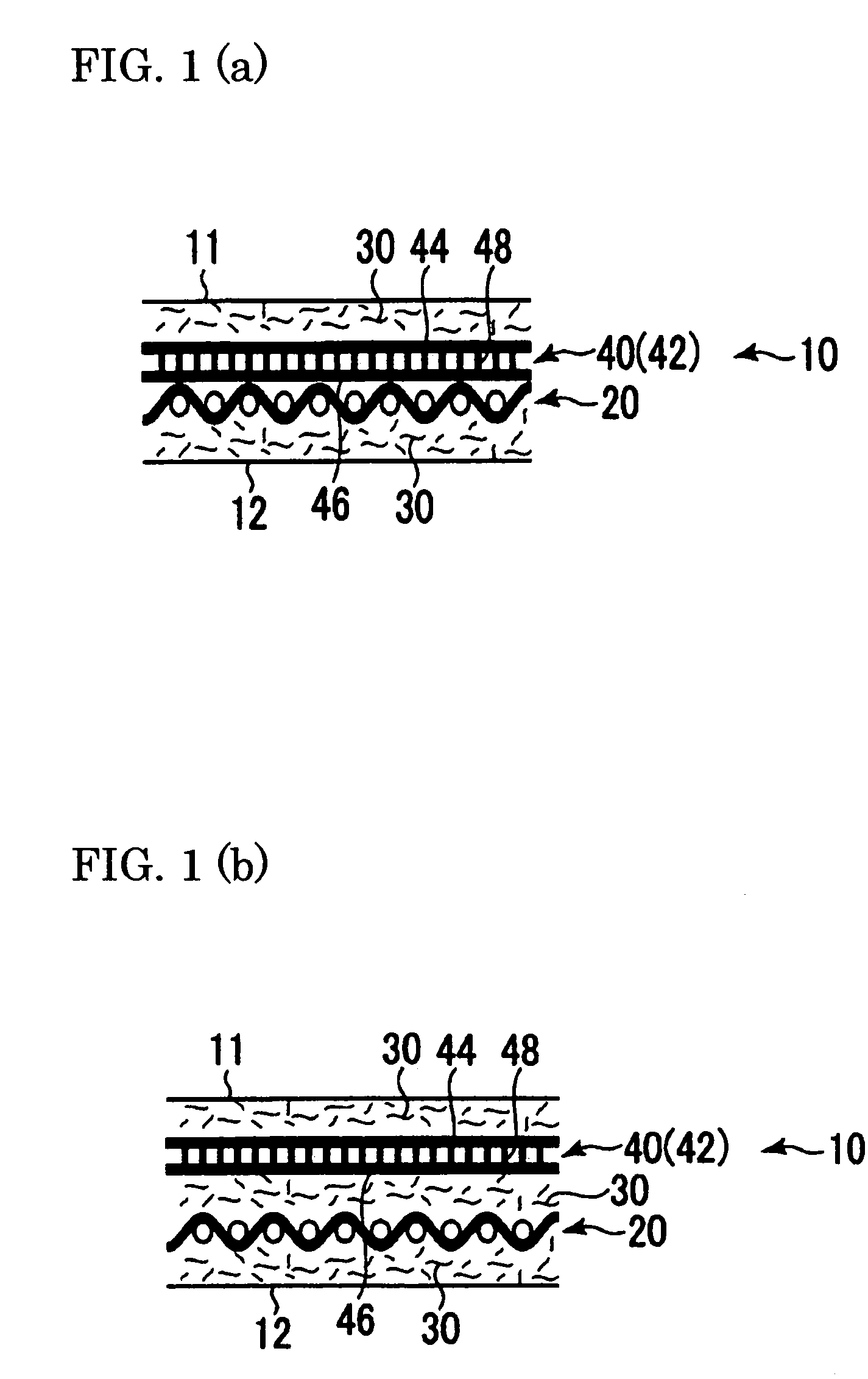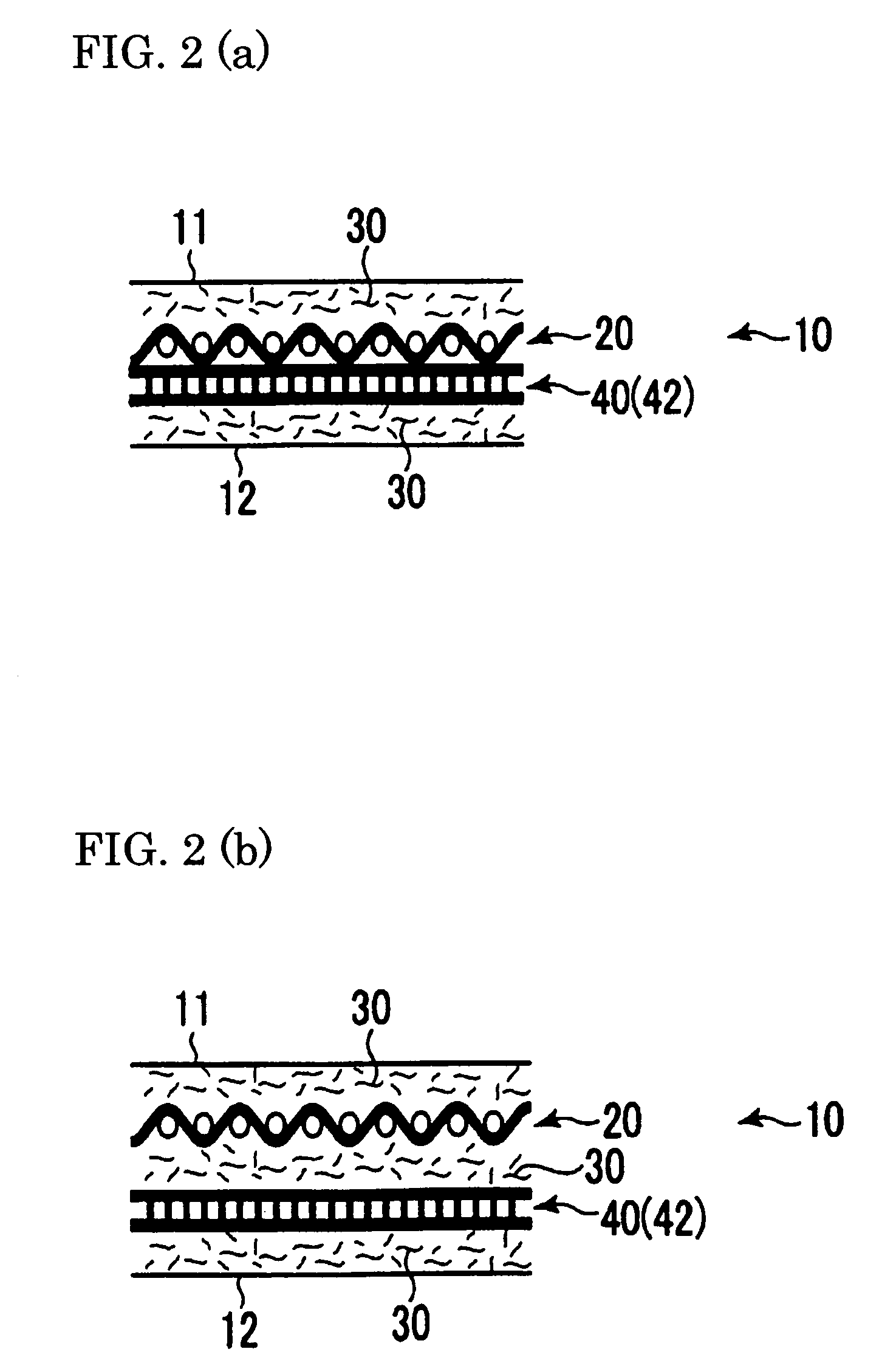Press felt for papermaking and manufacturing method
a technology of press felt and papermaking, applied in the field of press felt for papermaking, can solve the problems of reduced elasticity of press felt, reduced recovery ability, and insatiable ability of felt to maintain thickness, and achieve the effect of superior compression recovery ability and superior ability to maintain thickness
- Summary
- Abstract
- Description
- Claims
- Application Information
AI Technical Summary
Benefits of technology
Problems solved by technology
Method used
Image
Examples
example 2
[0069 of the invention had the same basic structure as that of the felt of Example 1, except that, in the layer of three-dimensional knitted fabric, both of the two pieces of fabric, and the connecting fibers, were composed of monofilament yarns.
[0070]Comparative Example 1 had the same basic structure as that of the felt of Example 1, except that all the connecting fibers in the layer of a three-dimensional knitted fabric were disposed almost perpendicular to the knitted fabric layers instead of being disposed diagonally.
[0071]FIG. 12(b) is a cross-sectional view of Comparative Example 2. The felt 10B of Comparative Example 2 comprises two base bodies 20 disposed in face-to-face relationship, and staple fibers 30 integrated with both sides of the base body structure by needle punching. The two base fabrics bodies are also integrated with each other by the staple fibers in the process of needle punching.
[0072]To standardize the conditions of the four examples, the basis weights (in g...
PUM
| Property | Measurement | Unit |
|---|---|---|
| density | aaaaa | aaaaa |
| area | aaaaa | aaaaa |
| width | aaaaa | aaaaa |
Abstract
Description
Claims
Application Information
 Login to View More
Login to View More - R&D
- Intellectual Property
- Life Sciences
- Materials
- Tech Scout
- Unparalleled Data Quality
- Higher Quality Content
- 60% Fewer Hallucinations
Browse by: Latest US Patents, China's latest patents, Technical Efficacy Thesaurus, Application Domain, Technology Topic, Popular Technical Reports.
© 2025 PatSnap. All rights reserved.Legal|Privacy policy|Modern Slavery Act Transparency Statement|Sitemap|About US| Contact US: help@patsnap.com



